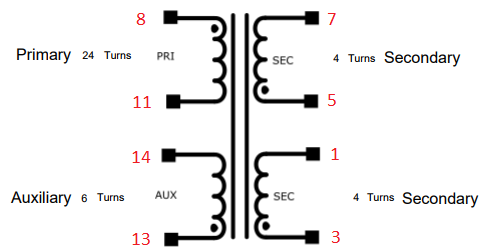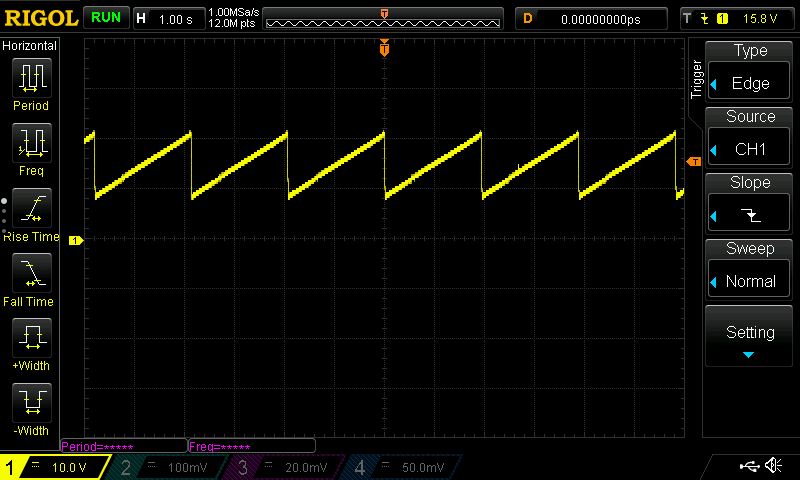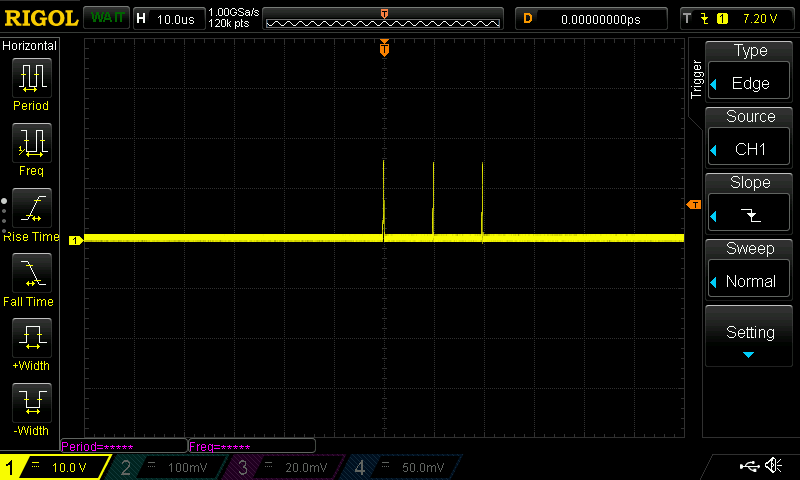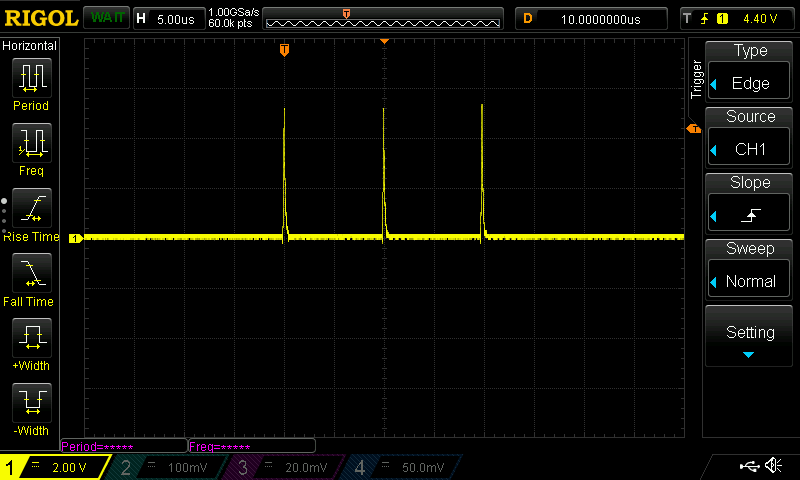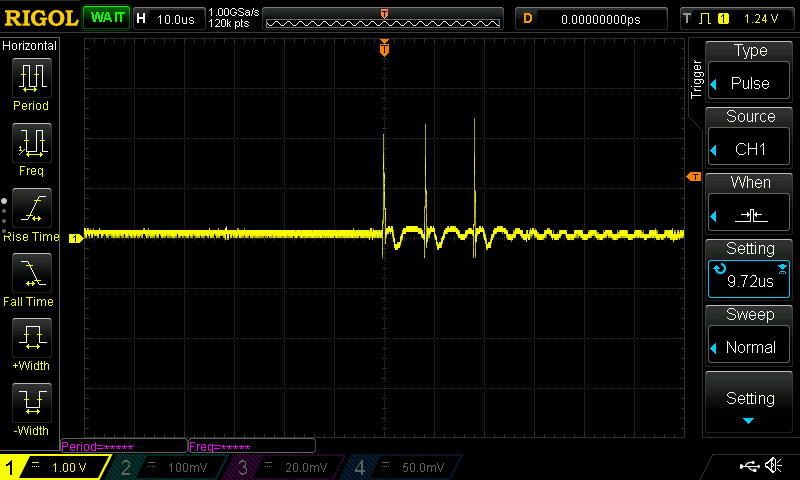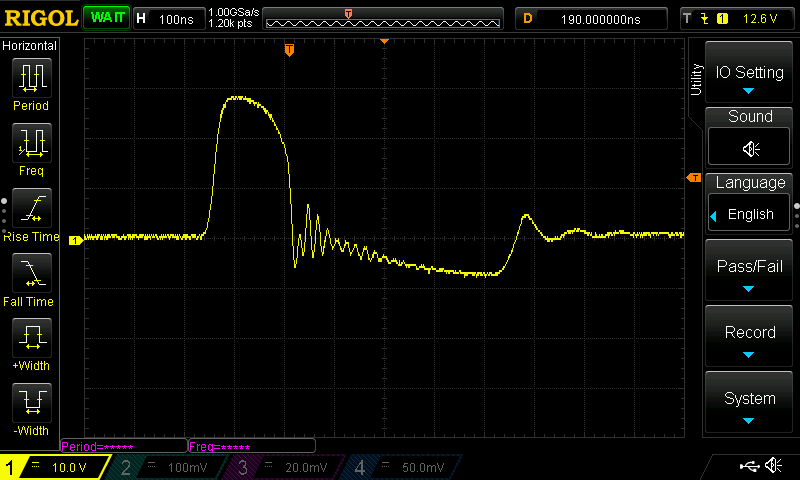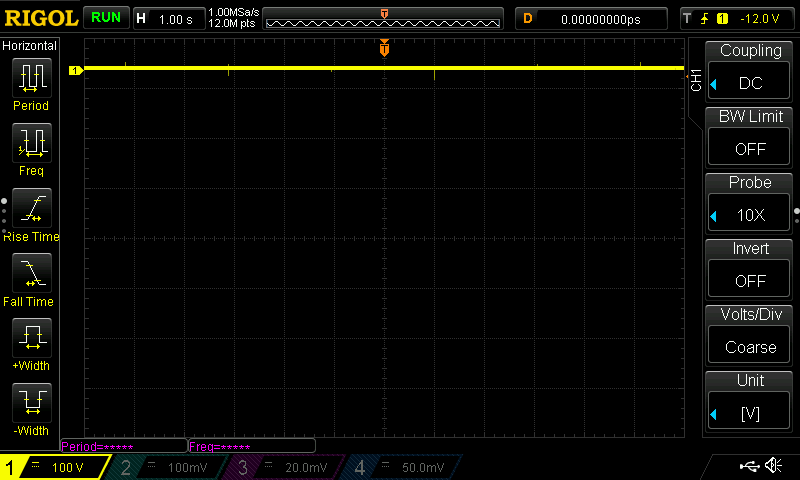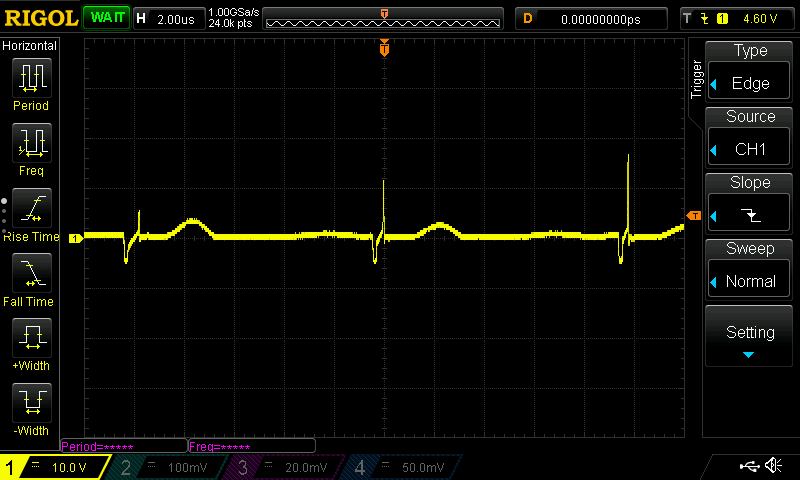Hello,
i need help reviewing the design of the flyback supply with 2 secondary outputs.
Currently i have a problem where the VDD would ramp to around 20V then the device restart itself. I can also hear the audible clicking noise from the IC when the device restart.
I use WEBENCH to come up with the design. My design input are the following
- Vin = 80V - 265VAC
- Vout = 12VDC
- Iout = 2A
What i did added to the design is one more secondary to be able to have both isolated and non-isolated 12V output.
Here is the design result from WEBENCH
What i have differently in my circuit, is the my D2 is a standard diode (FS8J) and not schottky diode. But i don't think this is the problem.
My assumption of the problem was with the transformer winding. I did recheck the transformer specification with the datasheet equations, and the turn ratios came to the same value as WEBENCH design.
I hand-wind the transformer using this configuration on this bobbin from TDK (B66230A1114T001).
I measured no voltage on the auxiliary winding. I believe this is because the device is not switching. The input voltage during testing were between 230-240VAC, rectified was around 330VDC to the primary.
The schematic is attached.4048.Schematics.pdf


